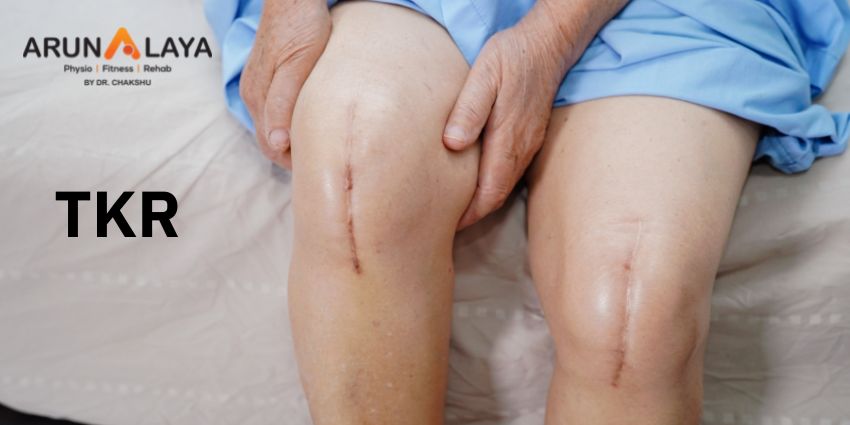What is TKR (Knee replacement surgery) ?
Knee replacement surgery (knee arthroplasty) can help relieve pain and restore function in severely diseased knee joints. The damaged part of your thighbone, shinbone and kneecap are cut and replaced with implants (artificial joints) made of metal alloys, high-grade plastics and polymers.
After this surgery, recovery and rehabilitation is a crucial stage. This is where a Physiotherapist will help you get back on your feet.
Rehabilitation begins right after you wake up from surgery. Within the first 24 hours, your physiotherapist (PT) will help you to stand up and walk using an assistive device. (walkers, crutches, and canes).
Committing to a plan and pushing yourself to do as much as possible each day will help you heal faster from surgery and improve your chances for long-term success.
Why is it done
-to relieve severe pain caused by osteoarthritis
-people having problems walking, climbing stairs, getting in and out of chairs and/or pain at rest.
Risks:
Knee replacement surgery, like any surgery, carries risks. They include:
• Infection
• Blood clots in the leg vein or lungs
• Heart attack
• Stroke
• Nerve damage
Prepare for your recovery
You’ll be encouraged to move your foot and ankle, which increases blood flow to your leg muscles and helps prevent swelling and blood clots. You’ll likely receive blood thinners and wear support hose or compression boots to further protect against swelling and clotting.
You’ll be asked to do frequent breathing exercises and gradually increase your activity level. A physical therapist will show you how to exercise your new knee. This will include paon management using TENS therapy, swelling management using ice packs and cryotherapy at regular intervals, ROM exercises, strengthening of your lower limb muscles, gait training and staircase training. They will also train you to do your functional activities and activity modification wherever required.
After you leave the hospital, you’ll continue physical therapy at home or at a center.
Do your exercises regularly, as instructed. For the best recovery, follow all of your care team’s instructions concerning wound care, diet and exercise.

